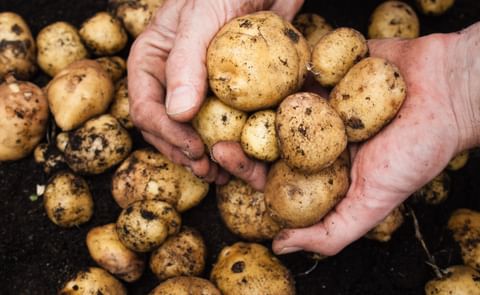Climate extremes impact on global crop yield variations. (Courtesy: Alvin Stone / Climate Extremes)
Climate extremes explain 18%-43% of global crop yield variations

Researchers from Australia, Germany, Switzerland and the United States have quantified the effect of climate extremes, such as droughts or heatwaves, on the yield variability of staple crops around the world.
Overall, year-to-year changes in climate factors during the growing season of maize, rice, soy and spring wheat accounted for 20%-49% of yield fluctuations, according to research published in Environmental Research Letters.
Climate extremes, such as hot and cold temperature extremes, drought and heavy precipitation, by themselves accounted for 18%-43% of these interannual variations in crop yield.
To get to the bottom of the impacts of climate extremes on agricultural yields, the researchers used a global agricultural database at high spatial resolution, and near-global coverage climate and climate extremes datasets. They applied a machine-learning algorithm, Random Forests, to tease out which climate factors played the greatest role in influencing crop yields.
Dr. Elisabeth Vogel from the Centre of Excellence for Climate Extremes and Climate & Energy College at the University of Melbourne:
“Interestingly, we found that the most important climate factors for yield anomalies were related to temperature, not precipitation, as one could expect, with the average growing season temperature and temperature extremes playing a dominant role in predicting crop yields.”The research also revealed global hotspots – areas that produce a large proportion of the world’s crop production, yet are most susceptible to climate variability and extremes.

Indicators ranking global and regional production by relevance for total crop production and sensitivity to climate functions. Indicators i-iv: i) share of a region’s crop production relative to global production in 1990-2008 (%), ii) mean variability of regional production (SD of anomalies relative to mean production, in %), iii) the extent to which production anomalies are associated with yield anomalies (R^2 of regression of between production anomalies calculated from yields anomalies vs. actual production anomalies, iv) the explained function of variance of yields anomalies, predicted by climate conditions (a – all climate factors, b – contribution of extreme events). Indicators A and B are the aggregate of indicators i, ii, iii and iv a / iv b (calculated as geometric mean). Numbers in bold highlight the six largest values in each column for all continent-crop combinations (without global values).
But, as the researchers point out, global markets are not the only concern. Outside of these major regions, in regions where communities are highly dependent on agriculture for their livelihoods, the failure of these staple crops can be devastating.
Elisabeth Vogel:
“We found that most of these hotspots – regions that are critical for overall production and at the same time strongly influenced by climate variability and climate extremes – appear to be in industrialised crop production regions, such as North America and Europe.”
“With climate change predicted to change the variability of climate and increasing the likelihood and severity of climate extremes in most regions, our research highlights the importance of adapting food production to these changes.”
“Increasing the resilience to climate extremes requires a concerted effort at local, regional and international levels to reduce negative impacts for farmers and communities depending on agriculture for their living.”









